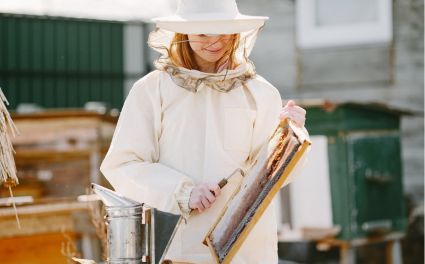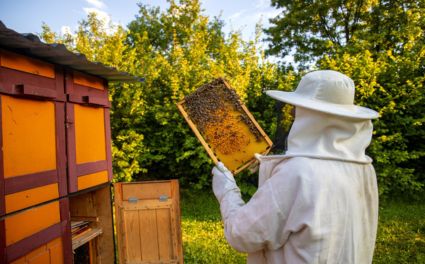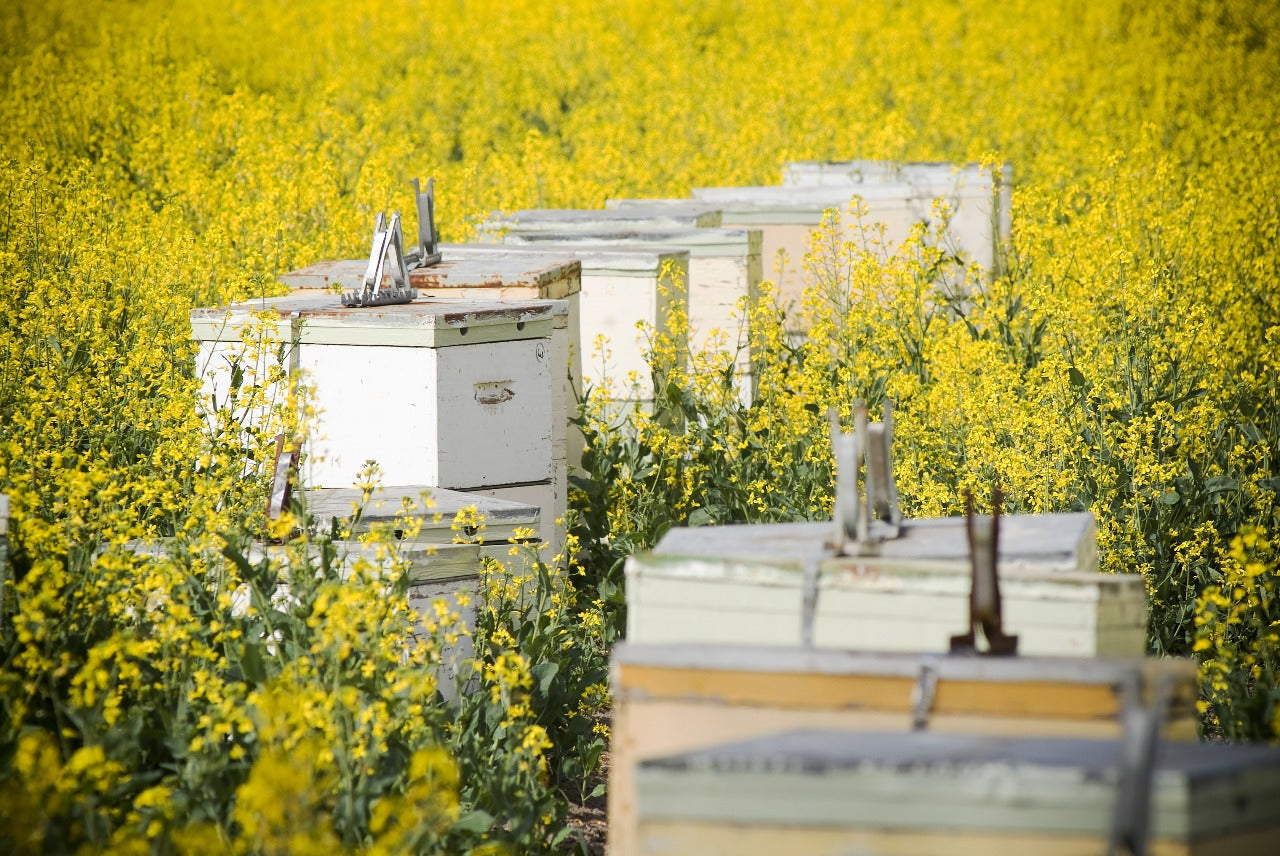Combining beehives is a strategic method used by beekeepers to strengthen colonies, increase productivity, and ensure long-term hive health. When executed properly, merging hives can save weak colonies and enhance honey yield — but it requires precision and care. In this guide, we’ll cover when and how to combine beehives, the best practices to follow, and how using proper Beekeeping Equipments can make the process safer and more effective.
🧠 Understanding When to Combine Beehives
Knowing when to merge hives is the first step toward success. Beekeepers typically combine colonies when one is noticeably weaker — low in population, lacking brood, or struggling with food reserves.
Common signs that indicate it’s time to combine hives include:
-
Declining bee numbers or visible lethargy
-
Minimal brood development
-
Empty or understocked honey frames
Timing matters. Combining hives before winter or during nectar shortages can help bees conserve energy and resources, while doing so during peak flow supports honey production. For more insights, explore Learn Beekeeping to understand seasonal hive management.

🧹 Preparation Before Merging Beehives
1. Assessing Hive Health
Before merging, inspect both hives thoroughly. Look for signs of disease, pests, or queen failure. Treat affected hives first to prevent infecting the healthy one. Strong colonies recover faster when merged with other stable hives.
2. Gathering the Right Equipment
Safe and efficient hive work depends on having the right Beekeeping Equipments and protective wear. Essential items include smokers, hive tools, and protective apparel such as:
For families or youth learning the craft, Beekeeping Kids Suits provide reliable protection during hive activities.
🌤️ Choosing the Right Time and Weather
The best time to merge colonies is during mild weather — early morning or late evening. Bees are calmer at these times, making the merging process smoother. Avoid rainy or cold conditions, as they increase stress and aggression among bees.
🧾 Techniques for Combining Beehives
There are two primary techniques: the newspaper method and direct merging.
🗞️ 1. Newspaper Method
The most reliable and widely used technique involves a simple barrier of newspaper:
-
Place a single sheet of newspaper over the weaker hive.
-
Poke a few small holes in the paper.
-
Stack the stronger hive on top.
-
Allow the bees to chew through gradually — this slow introduction helps them blend without fighting.
This method gives bees time to exchange pheromones and accept each other peacefully.
🐝 2. Direct Merging
For experienced beekeepers, direct merging is a faster approach:
-
Smoke both hives lightly to calm the bees.
-
Remove frames from the weaker hive and insert them into the stronger one.
-
Observe closely for aggression or signs of queen rejection.
Direct merging saves time but requires careful monitoring to avoid conflicts.
👑 Ensuring the Queen’s Acceptance
The queen’s survival determines the success of the merge. When combining colonies, ensure the queen is accepted by the worker bees. If aggression occurs, use a queen cage to introduce her gradually.
Regularly check the brood pattern afterward — a strong, consistent brood is the best sign of acceptance and stability.
🍯 Post-Combining Care and Management
Once hives are merged, ongoing monitoring ensures harmony.
Watch for Aggression
Minor clashes are normal, but prolonged fighting signals rejection. If necessary, separate the colonies temporarily and reattempt the merge later.
Feed the Bees
Offer sugar syrup or protein supplements to help the unified hive rebuild strength.
Maintain Space
Prevent overcrowding by providing additional frames or supers when population growth accelerates.
For added comfort and ventilation during these tasks, many beekeepers prefer Pink Bee Suits — a stylish yet practical choice offering equal protection.
⚠️ Common Challenges and Solutions
Dealing with Aggression
Some bees may become defensive after merging. Avoid loud noises and inspect calmly. If conflicts persist, smoke lightly or separate temporarily.
Addressing Disease or Pests
Monitor the new hive for signs of Varroa mites, wax moths, or foulbrood. Early detection and intervention are critical.
Maintaining Hive Balance
Ensure the queen’s laying pattern remains stable. Too many drones or unbalanced brood areas may indicate internal stress.
Consistent inspections — using safe, breathable gear like OZ Armour’s protective clothing — minimize risks during hive checks.
🌻 Benefits of Combining Beehives
1. Strengthening Weak Colonies
Merging a failing hive with a stronger one boosts overall survival. The larger workforce improves brood care, defense, and foraging efficiency.
2. Optimizing Resource Use
Merged hives can utilize nectar, pollen, and space more efficiently. A stronger, unified colony stores food faster and maintains a balanced temperature during harsh weather.
3. Increasing Honey Production
More bees mean more foraging power. With a single, strong queen and an expanded workforce, honey production often rises noticeably.
For those exploring colony development and honey collection methods, Read More Blogs About Beekeeping for detailed seasonal guides and professional insights.
👩🌾 Safety Gear for Combining Beehives
Working with two colonies can be unpredictable, making protective clothing essential. OZ Armour’s durable apparel — including jackets, gloves, and trousers — provides full-body coverage and breathability for safe hive handling.
Whether using the newspaper method or direct merging, high-quality safety wear reduces the risk of stings and stress.
🧒 Beekeeping for the Next Generation
Encouraging children to participate in beekeeping fosters responsibility and curiosity about nature. The OZ Armour collection of Beekeeping Kids Suits offers lightweight, ventilated designs that allow young learners to help safely during tasks like merging hives or inspecting brood frames.
Pair this with proper ankle protection and gloves for a complete safety setup — ensuring confidence and comfort for the next generation of beekeepers.

🧤 OZ Armour and Modern Beekeeping
Globally recognized for quality craftsmanship, OZ Armour produces premium protective gear that meets the needs of both hobbyists and professionals. Their designs emphasize comfort, safety, and airflow — making hive management tasks such as combining colonies efficient and stress-free.
Beekeepers across the US, UK, EU,NZ and AU trust OZ Armour for their beekeeping suits, veils, and jackets — helping them manage their hives effectively year-round.
🐝 Conclusion
Combining beehives is an essential skill in sustainable beekeeping. Done correctly, it revitalizes weak colonies, improves resource allocation, and boosts honey production — while keeping the entire apiary balanced and thriving.
By using proven methods, maintaining queen health, and equipping yourself with reliable gear like beekeeping jackets, gloves, suits, and veils, you can merge hives confidently and safely.
With consistent learning through Learn Beekeeping and guidance from industry leaders like OZ Armour, every beekeeper — beginner or expert — can build a stronger, more productive future for their bees.













